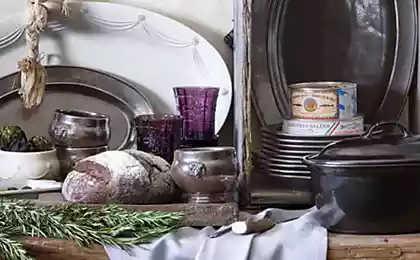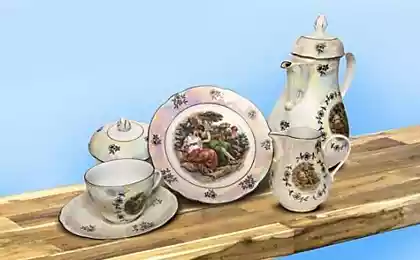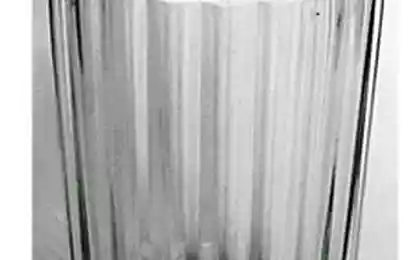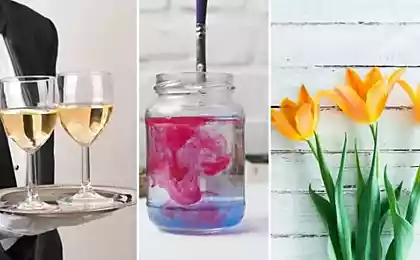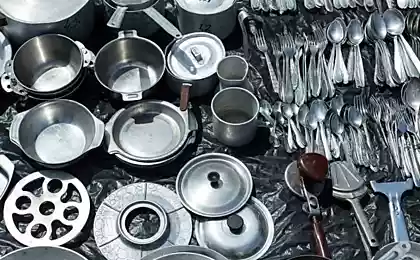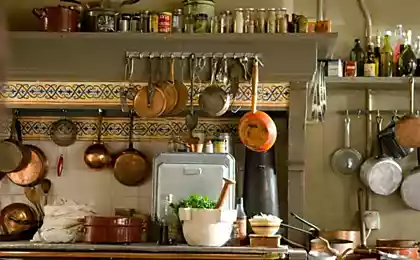183
The famous two-layer glasses of the fortress Vershinin, the secret of which has not been solved in 200 years!
Comfort is what makes the environment home. And it is the comfort that distinguishes your home from others. It so happened that I graduated from university with a degree in interior design and creating a cozy house or apartment became my profession. This work is creative, so it is very important for me to be in search of inspiration.
The state of inspiration can be overtaken at any moment and anywhere, but it is important to surround yourself with what you love, visit places that you like, and of course communicate with loved ones. A few months ago, together with my close friend Olga, I visited one of the exhibitions of the museum. glass and crystal. There I was able to see something that fascinates me to this day.
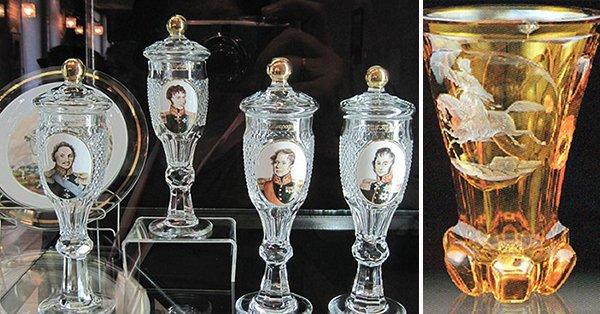
“There is no limit to the skill of the Russian Leyla!” I said, looking at one of the glasses of Vershinin’s work.
More than 200 years ago, glassworks master of serf Alexander Vershinin created unique double-layered glassesBetween the walls of which there were whole paintings, or rather, small models of landscapes made of pebbles, moss, straw, colored threads and paper.
But to understand the secret of their manufacture and reproduce such products so far no one has succeeded.

For many years, special admiration and bewilderment of specialists was caused by how the master managed to seal the glass walls and not burn, not destroy fragile models. At that time, glass blowers worked without gas burners, near hot furnaces, where the products were heated and melted whole.
The Vershinin serf family worked at the factory for more than a century, and its representatives were masters and managers from the end of the XVIII to the beginning of the XX century. And Alexander Vershinin in the early XIX century was the best master at the plant. In 1807, Emperor Alexander I awarded him a gold watch.
A serf by birth, this unique man proved himself not only as a skilled glass master, but also as a chemist, brilliant painter and designer of sets.

Two-layer glasses Editorial "Site" Take a moment to explore the world of art and watch 11. works of master Vershinin. A true virtuoso of his craft!
I also suggest you to get acquainted with 17 delightful and incredible stone flowers of Carl Faberge, which many call the miracle of jewelry. Carl Faberge is not only famous for his Easter eggs. Connoisseurs of jewelry art consider the true masterpiece of Faberge flowers.
Not so long ago, scientists have put forward several assumptions of the solution. Mysteries of making "vershinin" glasses. It is assumed that ice was used as glue. The picture could be applied to a wet surface, which was then frozen. Later, when the glasses were inserted into each other, the ice was melted.
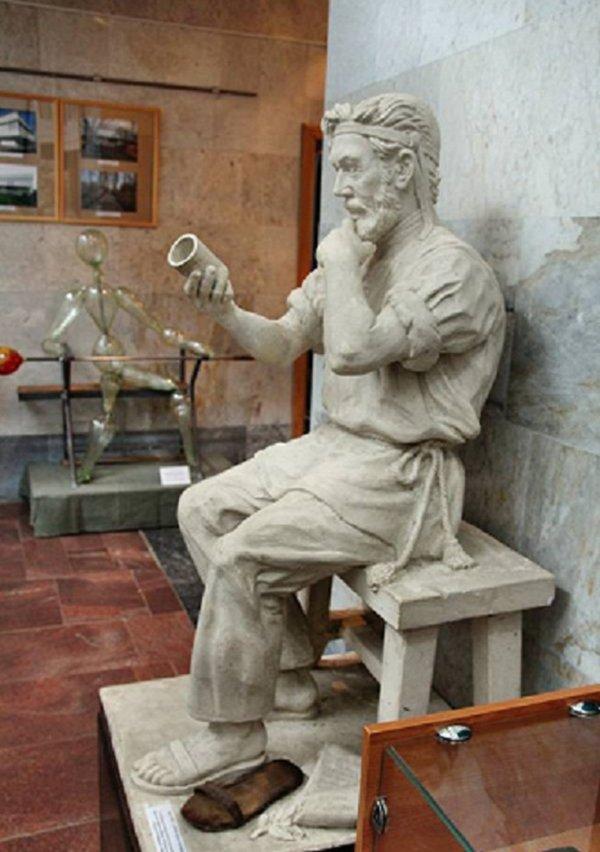
And for welding the edges of the glass was smeared with phosphorus and set on fire like a fireworks display. As a result, a large amount of heat was released, which was enough for local welding. And it is possible that the edges are not brewed, but simply filled with a special mastic. But even if it is so, it is still a very painstaking and time-consuming work, which is only possible for a real virtuoso.
What do you think of these wonderful works of art? Personally, I think the work of this master is truly brilliant.
Did you like the article? Share your inspiration with your friends, they will be grateful for it!
The state of inspiration can be overtaken at any moment and anywhere, but it is important to surround yourself with what you love, visit places that you like, and of course communicate with loved ones. A few months ago, together with my close friend Olga, I visited one of the exhibitions of the museum. glass and crystal. There I was able to see something that fascinates me to this day.

“There is no limit to the skill of the Russian Leyla!” I said, looking at one of the glasses of Vershinin’s work.
More than 200 years ago, glassworks master of serf Alexander Vershinin created unique double-layered glassesBetween the walls of which there were whole paintings, or rather, small models of landscapes made of pebbles, moss, straw, colored threads and paper.
But to understand the secret of their manufacture and reproduce such products so far no one has succeeded.

For many years, special admiration and bewilderment of specialists was caused by how the master managed to seal the glass walls and not burn, not destroy fragile models. At that time, glass blowers worked without gas burners, near hot furnaces, where the products were heated and melted whole.
The Vershinin serf family worked at the factory for more than a century, and its representatives were masters and managers from the end of the XVIII to the beginning of the XX century. And Alexander Vershinin in the early XIX century was the best master at the plant. In 1807, Emperor Alexander I awarded him a gold watch.
A serf by birth, this unique man proved himself not only as a skilled glass master, but also as a chemist, brilliant painter and designer of sets.

Two-layer glasses Editorial "Site" Take a moment to explore the world of art and watch 11. works of master Vershinin. A true virtuoso of his craft!
- Alexander Vershinin produced sets commissioned by the royal family, glasses decorated on the theme of the war of 1812, glasses and decanters with grand ducal coats of arms.

- This master is most famous for his uniquelyThey are now called “Vershininsky”.
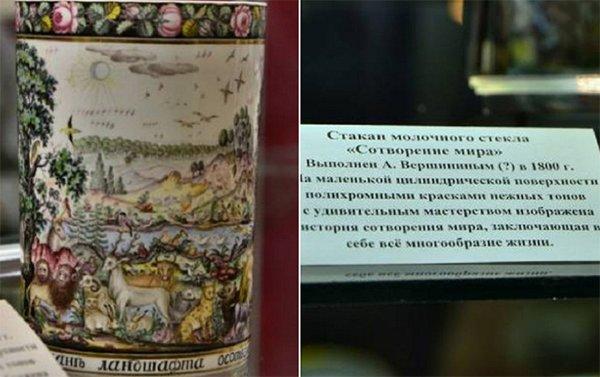
- And on the walls of this glass there is a whole landscape - in the park of the Bakhmetev estate. Cavaliers walk with ladies, children play nearby, ducks and geese swim in the pond, birds sit on tree branches, full of idyll. It seems nothing special, but amazing is that the whole composition is not drawn, but is made of straw, thin twigs, moss, paper and is inside the glass. At the same time, what technology the master used in the process of work of scientists is still unknown.
You can’t look at this glass anymore. In August 1996, this masterpiece was stolen from the museum and has not yet been found.
- These items are in private collections in the United States.
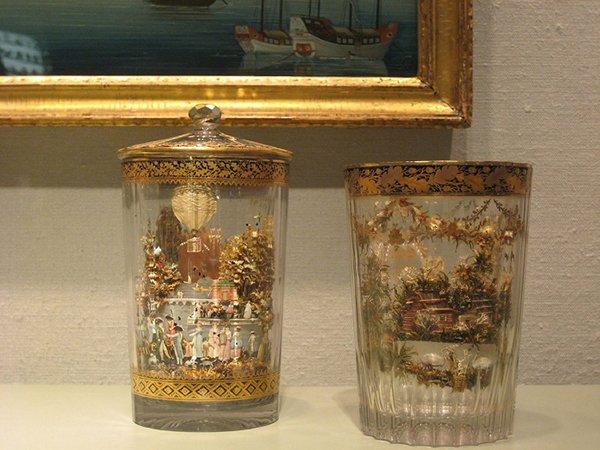
- How many of these masterpieces have survived to this day is not known for certain. Some of them are in personal collections and only occasionally “surface” at auctions, and only eight pieces are stored in museums. One of these glasses was exhibited in the Nikolsk Museum, being its pride.
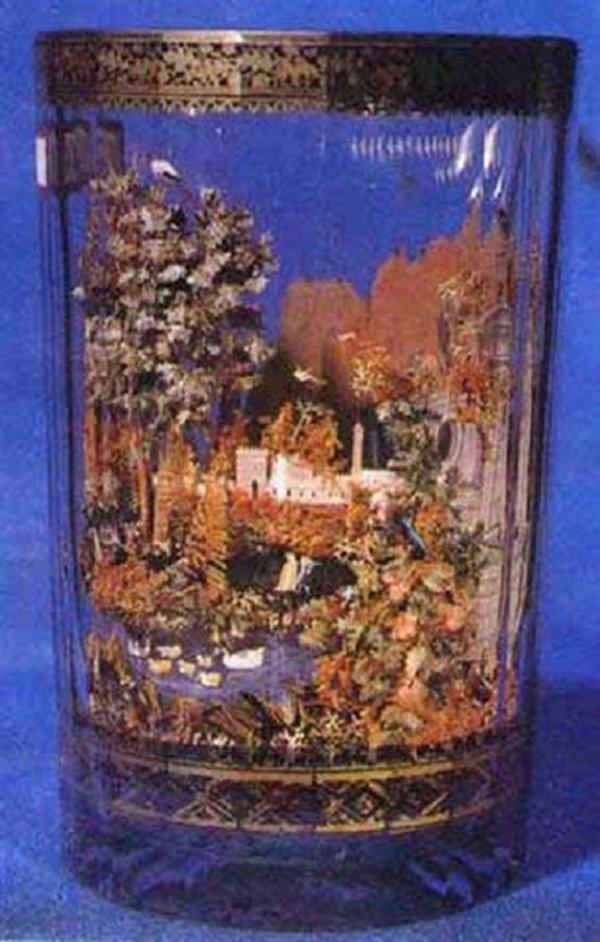
- Amazing splendor!
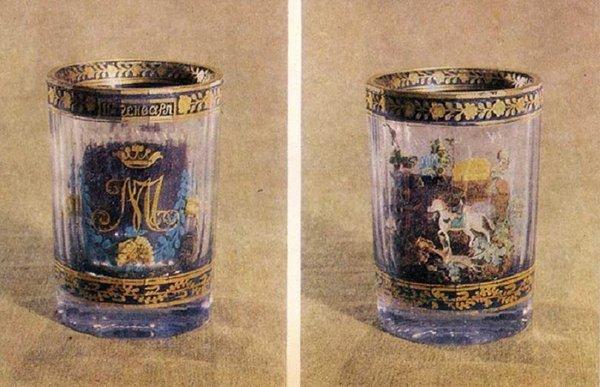
- Now in the museum collections known eight such unique glasses, the work of Vershinin. The plot of the decor is not repeated on any of them. In Kuskovo there are two more glasses made in the same technique, received from different sources, but their artistic quality is much lower. They were probably performed by the disciples of Vershinin. Neither during life nor after the death of Vershinin, no one was able to recreate such vessels. That is why they are worth a lot of money.

- In my opinion, it's just genius!
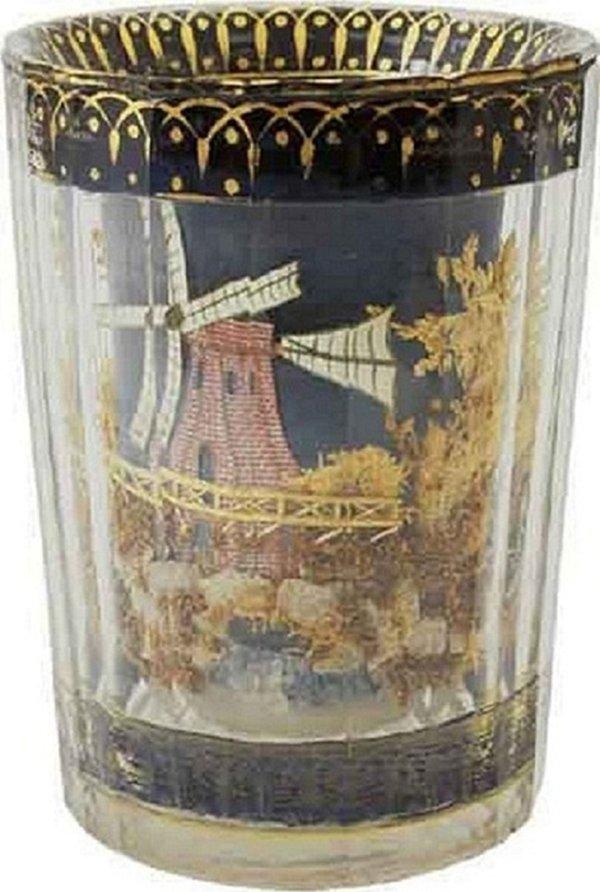
- These two glasses were made in 1797. A glass of blue glass with a miniature painting of gold and silver in a soft, picturesque manner, has the inscription “View at noon of a hunter shooting birds” and refers to the hand of Vershinin himself, and the neighboring work of his student.

- Alexander Vershinin created objects that today dream to get the largest museums in the world.

- For a long time, the technology of making these glasses remained a complete mystery, but later, when studying one such glass, which has a small chip along the edge, they found that it has double walls, and the composition is placed not in the glass, but between the walls. And, nevertheless, there are a number of mysteries that leave specialists in admiration and bewilderment: how the master attached his models to the glass, because the glasses are completely transparent, and there is no trace of glue on them.
And also how he managed to insert one glass into another so that the picture did not move, since there is practically no gap between the glasses. And finally, as soldered the walls of the glasses on top, leaving the whole composition intact.
I also suggest you to get acquainted with 17 delightful and incredible stone flowers of Carl Faberge, which many call the miracle of jewelry. Carl Faberge is not only famous for his Easter eggs. Connoisseurs of jewelry art consider the true masterpiece of Faberge flowers.
Not so long ago, scientists have put forward several assumptions of the solution. Mysteries of making "vershinin" glasses. It is assumed that ice was used as glue. The picture could be applied to a wet surface, which was then frozen. Later, when the glasses were inserted into each other, the ice was melted.

And for welding the edges of the glass was smeared with phosphorus and set on fire like a fireworks display. As a result, a large amount of heat was released, which was enough for local welding. And it is possible that the edges are not brewed, but simply filled with a special mastic. But even if it is so, it is still a very painstaking and time-consuming work, which is only possible for a real virtuoso.
What do you think of these wonderful works of art? Personally, I think the work of this master is truly brilliant.
Did you like the article? Share your inspiration with your friends, they will be grateful for it!
February 16 is Chinese New Year. Astrologer Kevin Fung said he prepared the Yellow Dog for each sign.
“Talk ten times! No facial rejuvenation system will work if you forget about the usual cow.












